#carl-linnaeus
Text
Carl Linnaeus Sculpture at Chicago Botanic Garden 🌿


#Chicago Botanic Garden#Carl Linnaeus#Statue#Swedish#Botanist#Physician#Zoologist#Waterfall#Garden#Tree#Plants#Bronze#Sculpture#Tamarix Pentandra#Salvia Blue Spire#Lake Cook Road#Chicago#Botanical Garden#Glencoe#Illinois
74 notes
·
View notes
Text
Stunning View - Chapter 2
by LaudaddySmitten
(GOAD Writers Guild Official)

Ch 2: “In this honeysuckle grove…” Summary
Crowley, still rather off-his-head on laudanum, makes a lovely discovery in their surroundings, and shares it with Aziraphale. There's more to this graveyard (and this demon) than Aziraphale realized.
CW/TW: Canon-typical substance use- laudanum (but NO dub con); Rated Explicit (Eventual smut later chapters)
Excerpt
With a lilt of curiosity which always led Crowley to excitement, (excitement being the only logical thing for curiosity to lead to, after all), he ruminated, “Ooohh I know it, I know this one! It smells…it smells…really sweet and nice, like …well, like you, angel, you always smell really sweet and nice. But I already know what you smell like and this isn't that. So…..”
Crowley squeezed his eyes shut in almost painful concentration. “OH! I know! I have it!” Crowley jabbed a finger in Aziraphale's direction with great finality, and declared confidently, “It's…Whazzitsname!”
Having made himself perfectly clear, Crowley grinned smugly at Aziraphale then proceeded to look for the source of the smell. Prickly blades of grass needled their way closer to his scalp as he let his head fall rapidly side to side. Unable to really focus on much with head lolling at the speed of laudanum, he stopped when the world began to spin faster than planetary physics allow. Only then did some of the visual input catch up to the processing part of his brain. “Wait, I think I saw it!”
Crowley moved his head more cautiously the second time around and stopped when he found Aziraphale to his right. (That was very distracting. Does Aziraphale know how distracting he is?) Crowley smiled over his glasses, “are you wearing whazzitsname-perfumed soap, Aziraphale?” Aziraphale blushed, and the slate of Crowley’s thoughts wiped itself clean, replacing the previous jumble of scribbles with a perfectly rendered recreation of Aziraphale's irises in which Crowley was swimming. Crowley's singular attention meant he noticed when Aziraphale's eyes drifted out of focus.
“Crowley, is it a plant you're talking about?”
Continue reading on AO3

Best beta team! @olfactoryventriloquism @outrageousring5655 @happynachohologram - thanks for beta-ing this chapter more than any reasonable writer should ever request, and for bullying me very nicely convincing me to write that scene.
I hope you like how it all turned out. ❤️
Thanks everyone in the @goodomensafterdark Writer's Guild! Additional Ch 2 betas: @fishey-me @kotias @sixbynine-da @ghst-signal
Amazing custom fanart for my fic:
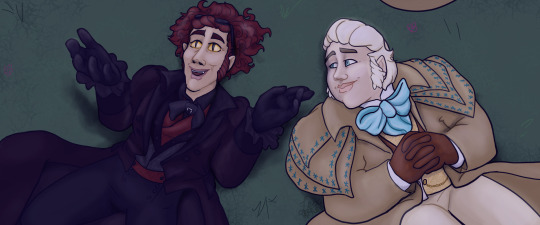
Thank you @lexarturo
#Stunning View#off my head on laudaddy#science always belongs in fanfiction#the resurrectionists#good omens minisode#good omens 1827#laudaddy#good omens fanfic#ineffable husbands#aziracrow#good omens aziraphale#good omens crowley#good omens fanart#good omens after dark#romance happens after dark too#in fact this whole fic happens after dark#goad writers community#writers of after dark#goad#my fanfiction#my posts#az fell#anthony j crowley#dr mcfell#edinburgh crowley#ineffablle idiots#botany#carl linnaeus#i will not stop putting science into creative writing#good omens
37 notes
·
View notes
Text
hello tumblr I’m a frog scientist and I heard you like frogs here so I’m here to share frog content if that’s okay
my first contribution is to inform you all that Carl Linnaeus hated frogs. Like, really hated them:
"These foul and loathsome animals are abhorrent because of their cold body, pale color, cartilaginous skeleton, filthy skin, fierce aspect, calculating eye, offensive smell, harsh voice, squalid habitation, and terrible venom; and so their Creator has not exerted his powers to make more of them." - Carl Linnaeus, Systema Naturae 1758 (Translated from Latin)
idk what went down between Linnaeus and a frog but dude was traumatised
also here is a photo of one of my science frogs, his name is Granny

#i love frogs#frog science#frog#frogs#carl linnaeus#herptile#herpetology#science#history#green tree frogs#dumpy frog#whites tree frog
181 notes
·
View notes
Text
karl the raccoon is not a reference to karl marx in either the raven (2012) or bungou stray dogs. he's likely named after carl linnaeus (1707–1778), the father of modern biological taxonomy.
linnaeus had a beloved raccoon named sjupp, a gift from the crown prince of sweden. sjupp loved eggs, almonds, raisins, sugared cakes, sugar, and fruit of every kind. sjupp could not bear anything with vinegar on it, or sauerkraut, or raw or boiled fish. he was friendly and playful, especially to those who ingratiated themselves by means of a few raisins; but, when scorned, prone to irreconcilable hatred.
we know these things about sjupp because upon sjupp's untimely mauling by a dog, linnaeus, man of science that he was, dissected the little rascal, and wrote an immensely fond anatomical study.
linnaeus's watercolor of sjupp, btw. if you even care.
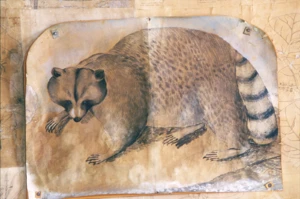
[all of the above comes from here, and The Compleat Naturalist: A Life of Linnaeus by Wilfrid Jasper Walter]
linnaeus's connection to america's own beloved raccoon—the architect of detective fiction and gothic luminary edgar allan poe (1809-1849)—relates to poe's only bestseller as a living author: The Conchologist’s First Book: A System of Testaceous Malacology.
the first edition was already written by the schoolteacher thomas wyatt. wyatt had built upon the work of other naturalists (including linnaeus) to create a comprehensive overview of known shell classifications so that he could fall into the trap of academic publishing. his tomb on mollusks was too expensive and too large for his audience, but he couldn't adapt it into a more practical volume without incurring his publisher's ire.
meanwhile, poe; his teenage cousin wife, virginia; virginia's pet fawn; and his aunt mother-in-law, maria, were suffering for want of food. so, when the two men were introduced, poe was eager to freelance for wyatt by revising the shell book and republishing its abridged version under his own name. unlike most of poe's works, this one was a great success: it sold out in two months and was reprinted twice in six years.
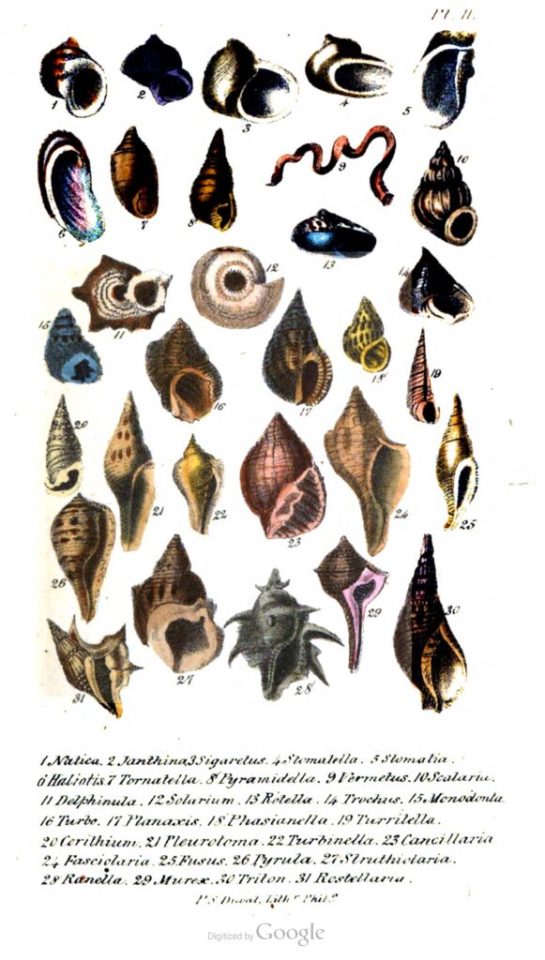
(Color plate from the second edition of Edgar Allan Poe, The Conchologist’s First Book: A System of Testaceous Malacology)
his contributions, as it turned out, weren't shallow: poe's revisions to the text were breakthrough in their era. at the time, shelled creatures were organized typically by only their shells; the little beasties within the shells were largely ignored, including by wyatt. but poe didn't only slim down the text he was given; he reorganized its shell-centered pages to focus instead on the internal anatomy of the animals inside the shell. poe, who was fluent in french, also translated descriptions of the animals provided by preeminent naturalist georges cuvier to include alongside the descriptions of their shells. in other words, he helped to develop the field of mollusk studies.
to quote malacologist matthias glaubrecht notes, poe “was among the first to recognize and comment that a reliable classification of mollusks requires a combined analysis, which meant in his times reconciling a system based on hard shells . . . with evidence from soft body anatomy."
of course, because poe couldn't catch a break, it later became evident that wyatt plagiarized much of the text, the sin of which fell onto poe publicly. nevertheless, poe's sincere fascination with natural science and his inability to escape ridiculous situations left a legacy of camp gothic horror, science fiction, and, somewhat absurdly, taxonomy.
[a much better recounting of and retrospective on poe, mollusk scientist, can be found here.]
so, yeah, that's why edgar allen poe is paired with raccoon carl linnaeus in bsd (and likely the raven (2012)). though they might be an odd couple, they do share a common classification.
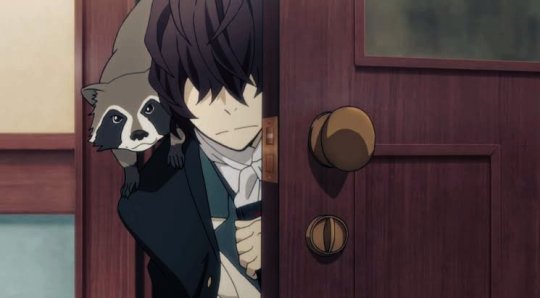
#bsd#bungou stray dogs#bsd poe#bsd karl#carl linnaeus#edgar allen poe#there's so much more to say about this choice but ive already started to ramble#(this is also why ranpo and karl get along so well — they are similarly motivated)#anyway. i know everyone thinks it's karl marx. but why. there's a raccoon man right there already in poe's legacy.
9 notes
·
View notes
Text

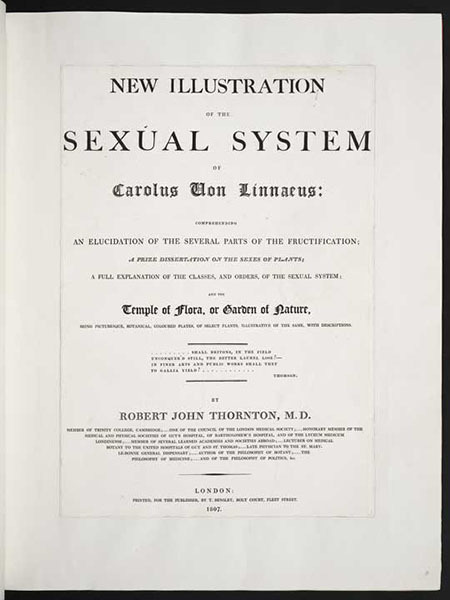
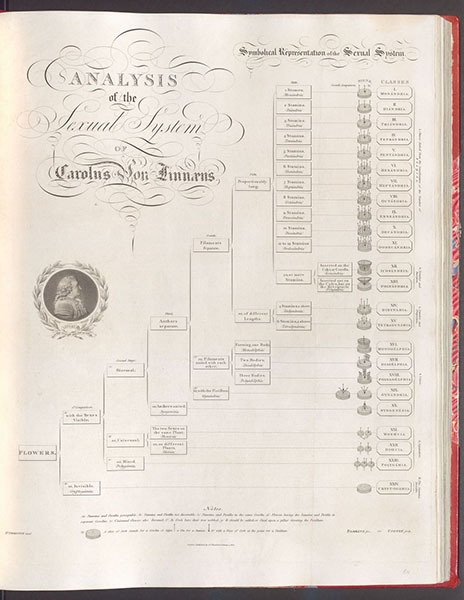

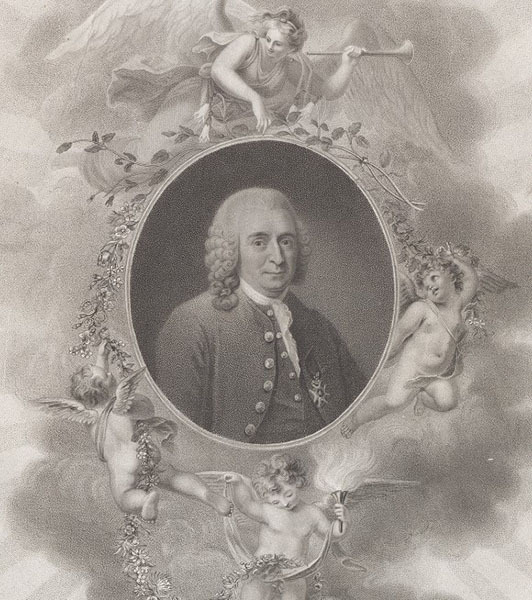
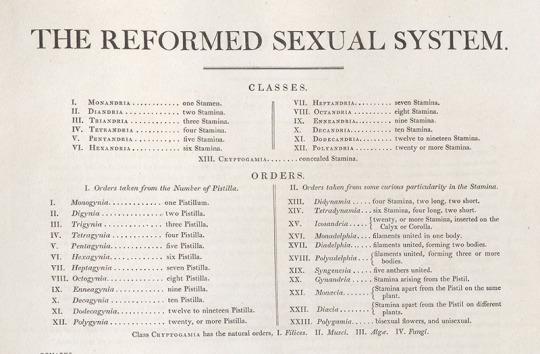

Carl Linnaeus – Scientist of the Day
Carl von Linné, a Swedish botanist and taxonomist better known as Carl Linnaeus, was born May 23, 1707.
read more...
#Carl Linnaeus#Linne#taxonomy#botany#histsci#histSTM#18th century#history of science#Ashworth#Scientist of the Day
5 notes
·
View notes
Text
losing my mind about the Wikipedia page on humans

Not only did they have to specify that Carl Linnaeus was a human, but that he was THE human
7 notes
·
View notes
Text
Check this out.
I know this is a myth. Red squirrels do not cross rivers in little boats. But it's driving me mad that I can't find anything about the myth on the internet. The writers of this book (Things in the Forest by Mary & Elizabeth Kirby 1874) even say that Linnaeus observed it in Lapland, so why can't I find it!?
Anyway, the internet is sorely lacking in antique images of squirrels in boats (or on rafts?) so I'm putting one here. You're welcome.

If anyone can find out where this idea came from I'd love to see it because I can't find a trace on the biggest encyclopedia that's ever existed (the internet).

#bookblr#writeblr#writerblr#writers on tumblr#book writing#bookworm#creative writing#love writing#books#love books#books and libraries#antique books#old books#book collection#book collector#collectibles#answer my question#i need an answer#please answer#answer me#squirrels cross rivers in boats#squirrels cross rivers on rafts#squirrels in boats#vintage books#antique#carl linnaeus#linnaeus#squirrel myths#squirrel myth#does this have enough tags yet?
4 notes
·
View notes
Text
Carl Linnaeus was the first to describe a naturally occurring mutant of toadflax (Linaria vulgaris) that converted the bilaterally symmetrical flower to a radially symmetrical form (Figure 20.31).

"Plant Physiology and Development" int'l 6e - Taiz, L., Zeiger, E., Møller, I.M., Murphy, A.
#book quotes#plant physiology and development#nonfiction#textbook#peloria#mutants#mutation#toadflax#linaria vulgaris#carl linnaeus#bilateral symmetry#radial symmetry#cycloidea#dna#methylation
27 notes
·
View notes
Text
TIL that Carolus Linnaeus was referred to as "the Second Adam," because he created a universal naming schema for animals (mirroring Adam's actions in Genesis 2:19-20).
18 notes
·
View notes
Text
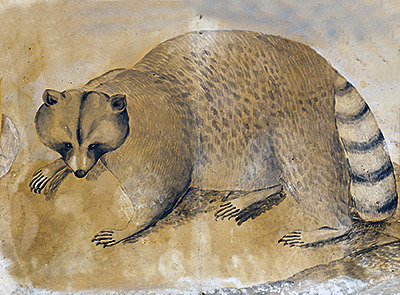
For #RaccoonAppreciationDay here is a watercolor of Carl Linnaeus' pet raccoon, Sjupp, by Lars Alstring, c.1746-7. Sjupp was a gift from Crown Prince Fredrik and lived in Linnaeus' garden at Uppsala. This work hung in Linnaeus' study at Hammarby.
Read more about Sjupp here:
Here too is a short video from the Linnean Society about Sjupp:
youtube
#Carl Linnaeus#Linnaeus#Linnean Society#raccoon#Sjupp#pets in art#animals in art#animal holiday#Raccoon Appreciation Day#International Raccoon Appreciation Day#Swedish art#European art#18th century art#natural history art#zoological illustration#Lars Alstring#Youtube
11 notes
·
View notes
Text
#linnaeus and dillenius sittin in a tree#tears and kisses#plant dad#gaaay#gay#bi#queer#carl linnaeus#johann jacob dillenius#bontanist#oxfod#plants#queer history#lgbqti#lgbt#botany#1760#1760s#vid
2 notes
·
View notes
Text
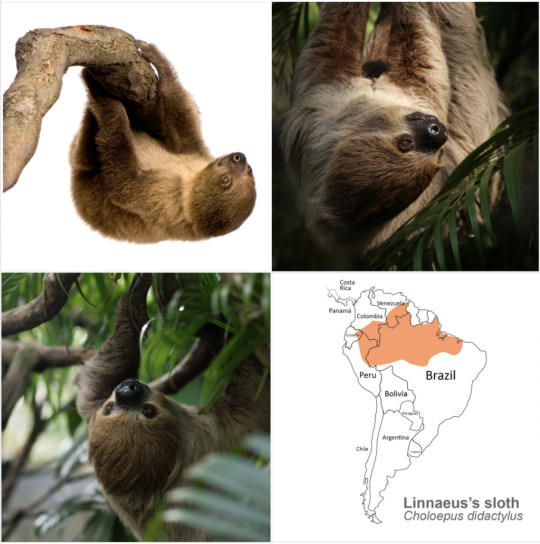
Continuing with #TwoFingeredSloth week, today we'll introduce you the chocolate sloth: Linnaeus's sloth!
Linnaeus’s two-fingered sloth is of similar appearance to C. hoffmanni, but has much darker coloration on the snout, hands, and feet.
Choloepus didactylus, literally “lame-foot” and “two-fingered”, is the scientific name of the Linnaeus two-fingered sloth, named after the very same Carl Linnaeus; the prominent figure of natural biology and father of taxonomy.
This species ranges from Venezuela, the Guyanas, and Colombia to Ecuador, Peru, and Brazil north of the Amazon River. There is some evidence to suggest that they also extend into Bolivia.
Do you want to learn more about sloths? Visit our website!
Source: The Sloth Conservation Foundation Facebook Page
#SlothFacts#Cute
#cute animals#animals#sloth#sloths#choloepus#two toed sloth#carl linnaeus#south america#wildlife#nature#animal facts#zoology#natural history#conservation
8 notes
·
View notes
Text
Ep. 38 Blackgirl on Mars
Martha Cinader speaks with Lesley-Ann Brown in Denmark, about her memoir, Blackgirl on Mars, a physical and spiritual search to discover home. The free-flowing conversation covers the mind of Carl Linnaeus, the waters of modern life and up-to-the-minute d
Lesley-Ann Brown roams Earth as Home.
Airing on WPVM Radio 103.7fm in Asheville NC, and WPVMfm.org at 4pm, PST December 6.
Martha Cinader speaks from the garden with Lesley-Ann Brown in Denmark, about her memoir, Blackgirl on Mars, a physical and spiritual search to discover home. The free-flowing conversation covers the organizing of Carl Linnaeus, the waters of modern life and…

View On WordPress
#Banned Books#Blackgirl on Mars#Carl Linnaeus#colonialism#Lesley-Ann Brown#Memoir#Poetry#racism#Repeater Books#spoken word#trauma#Wordslanger#Wordwind Chorus#writer#writing#Yvette Murray
2 notes
·
View notes
Text

The bedroom of 18th century botanist, Carl Linnaeus, who covered the walls of both his bedroom and study with botanical drawings.
Image source
10 notes
·
View notes
Photo


Pulmonaria officinalis, Spotted Lungwort or Common Lungwort a lovely little lad named after our Lungs. Most of Europe is blessed with reaching from Coast to Russia Central. Sadly Norway missed the day they were being handed out, The British Isles too missed it but took action and harboured it until naturalized. The Rest of the World Took notice and decided “Hey thats a nice plant I want one too” and so they got one or two.
The Lungworts are little hidey boys and prefer to be under larger vessels with shades. But if those untethered solar winds hit the little babino before its ready it will be Vegetative (wow) and wait till its shady to grow. They grace the land with their colours during early spring, which they appear red-pink at first but will alter their own pH levels to make themselves blue-purple.
Leonhart Fuchs (he sure did, 1501-1566) haply named the genus for he was a German Physician and 1/3 Founding Botanists, while Carl Linnaeus only got to give the epithet (second name part). And at the time anything remotely shaped like an organ was surely but the Big Man’s work was to cure an ailment relative to that shape. And by the Silly Man of Land Luck trait they got an actual plant they has healing attributes that does help with Lung ailments also burns. This is a common Action that Occurs throughout time, what chance.
Note: Please Do Not Ingest Random Plants you have No Knowledge About or Using them Medically.
5 notes
·
View notes
Photo

Carl Linnaeus was born on May 23, 1707. A Swedish botanist, zoologist, taxonomist, and physician who formalized binomial nomenclature, the modern system of naming organisms. He is known as the "father of modern taxonomy". In botany and zoology, the abbreviation L. is used to indicate Linnaeus as the authority for a species' name. In older publications, the abbreviation "Linn." is found. Linnaeus's remains constitute the type specimen for the species Homo sapiens following the International Code of Zoological Nomenclature, since the sole specimen that he is known to have examined was himself.
#carl linnaeus#botany#zoology#taxonomy#nomenclature#binomial nomenclature#international code of zoological nomenclature#science#science history#science birthdays#on this day#on this day in science history
3 notes
·
View notes